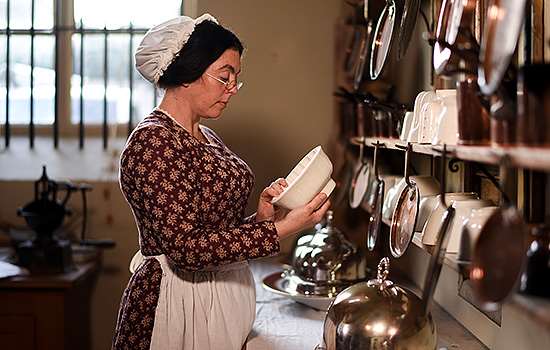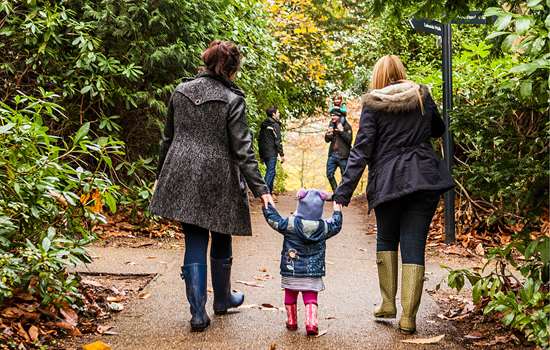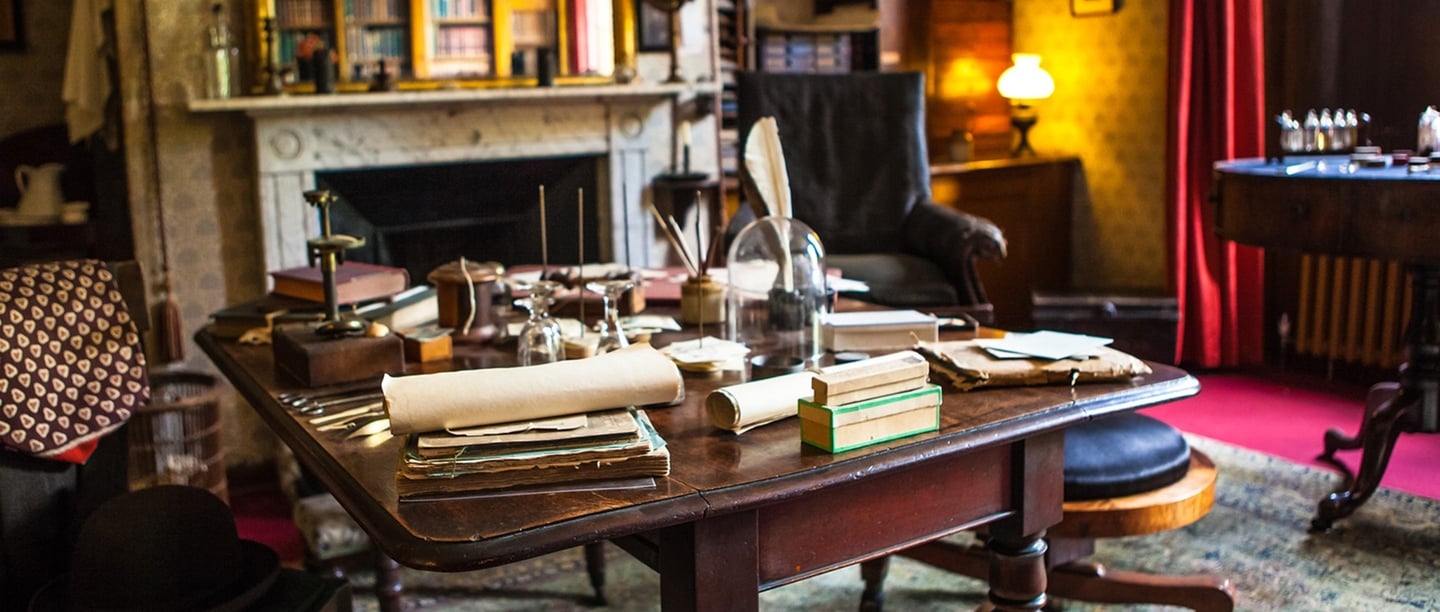1. Evolution
There are only a few ideas which can truly be labelled as revolutionary. Evolution is one of them. Boiled down to basics, the theory of evolution explains how and why living things change and develop differently over time and in different circumstances.
When Charles Darwin published his ground-breaking book 'On the Origin of Species' in 1859 while living at Down House in Kent, he caused a sensation. As a respected scientist (Darwin spent eight years reclassifying the entire barnacle sub-class to prove his credentials as a zoologist) his theories had to be taken seriously. But in the predominantly Christian Victorian England, his theories were highly controversial. Evolution directly contradicted the creation story in the Bible, and many were outraged.
Darwin wasn't the only person to have reached conclusions along these lines, but he was the first to back up his theories with a wealth of evidence.
Today, when you visit Darwin’s home in Kent, you can stand in the very study where he wrote this groundbreaking piece of literature.
2. Industrialisation
The Industrial Revolution began long before Queen Victoria came to the throne in 1838. Nevertheless, industrial ingenuity reached new heights in Victorian England, and this had huge economic and social consequences.
Factories needed vast numbers of people to work in them, and there was a huge shift as people moved from the countryside to urban areas. In 1751, around a quarter of people lived in towns and cities. By 1851, they were home to around half of the population.
Stott Park Bobbin Mill in Cumbria is an example of developing technology in action. The mill began operating in 1835. It was first powered by water, then by steam, and finally by electricity. Although small compared to other local mills, at its peak it was producing a quarter of a million bobbins a week. As with all factories and mills, the conditions were often arduous for the people working there.
3. Kitchen gadgets
Agnes Bertha Marshall was a pioneering cookery writer and entrepreneur whose specialism was ice-cream. Although this wasn't originally a Victorian recipe, Marshall made her name by improving the techniques used for making and serving it.
She even patented an ice-cream maker. Charles and Constance Thelluson, who lived at Brodsworth Hall, bought quite a few kitchen gadgets from her – including an ice-cream machine.
Other Victorian kitchen gadgets you probably have at home include the cheese grater, can openers and potato peelers. Mass production also meant things like pastry cutters, jelly and pie moulds and biscuit tins were more affordable than ever before.
4. Central heating
Although the Romans were the first to introduce central heating to Britain, we can thank the Victorians for the introduction of more modern systems that we recognise today. At Audley End House, a coal fired 'cockle stove' was installed in the basement in 1823, just 13 years after this technology was invented by William Strutt for heating his textile factories.
A very early hot water central heating system was also installed at Audley in 1846, when Stephenson & Co were paid £400 for 'hot water apparatus for airing mansion'. This was perhaps a Prices Apparatus – a coiled water-filled pipe which heated air that was then ducted through the house.
There was definitely a circulating hot water system by the 1870s, and some late 19th-century radiators survive in the Great Hall and ground floor gallery today.
Visit Audley End House5. Electric Lighting
Queen Victoria described her summer home Osborne in glowing terms, writing: 'It is impossible to imagine a prettier spot!' But it wasn’t just beautiful – she and Prince Albert made sure it was equipped with as many mod-cons as they could install.
Victoria was an early adopter of electricity, including at Osborne. Electric lighting can be seen in the Durbar Room and the Drawing Room. Originally early light bulbs from the Swan and Edison company were used, and we have a good selection in the collection at Osborne. Outside, the lighting was originally gas.
It wasn’t just lightbulbs though – the bell system was powered by Leclanche cells, a type of early battery. And the royal couple installed other ingenious technologies including...
6. Improved communications
Electric telegraph wires were set up linking Osborne with the mainland in 1852, using a special submarine cable. Six years later, this technology took communications even further afield. The first electronic message to cross the Atlantic was sent from Queen Victoria at Osborne to the American President James Buchanan on 16 August 1858. Today you can see a section of the original cable that was used to send it on display in the Swiss Cottage museum at Osborne.
The message, transcribed into Morse code, was sent first to Ireland by telegraph. From there, it was sent via the first transatlantic cable to Newfoundland in Canada, and then on to the President. It took three days to be received because of a fault on the cable – but this was still much faster than taking 10 to 12 days for a message sent by ship.
News of the breakthrough was celebrated on both sides of the Atlantic and it was hailed as the start of a new era. By the 1870s, underwater cables had been laid between Europe and America, Africa, India, Asia, and Australia, almost all by British companies, and it was widely recognised as crucial to British commercial and imperial success.
Alexander Grahame Bell demonstrated the newly invented telephone to Queen Victoria at Osborne, in January 1878 – just two years after he patented the device. A telephone was installed in post-room in 1885, and by 1898 there were several wall-mounted hand-sets around the house.
7. Social reform
England underwent incredible social change during the Victorian period. There were intense pressures coming from a rising population, rural unemployment and migration to the towns, together with often horrendous conditions in which many people lived and worked. At the same time, there were extraordinary advances taking place in science, technology, engineering and medicine.
Political and social changes were necessary – and the time was ripe for reform. Religious freedoms, electoral reform, public health and education were just some of the topics under scrutiny. New charities were formed, campaigns were spearheaded and ideas were circulated in newspapers, journals, periodicals and libraries.
London loomed large in the Victorian imagination as a metropolis of vice, and so the city was the focus of much of this activity. Many of the men and women who pioneered reforms and philanthropic causes are commemorated with blue plaques in London.
More to Explore
-

Victorian Cookery Recipes
Watch Victorian recipes being brought to life, and discover the reality of life below stairs at a Victorian country house.
-

Listen to the English Heritage Podcast
Join presenter Charles Rowe as we bring the history of our sites to life with news, views and expert interviews across over 150 episodes.
-

Become a member today
Enjoy unlimited access to hundreds of historical places with an annual membership. Plus there's free entry for up to six children.
